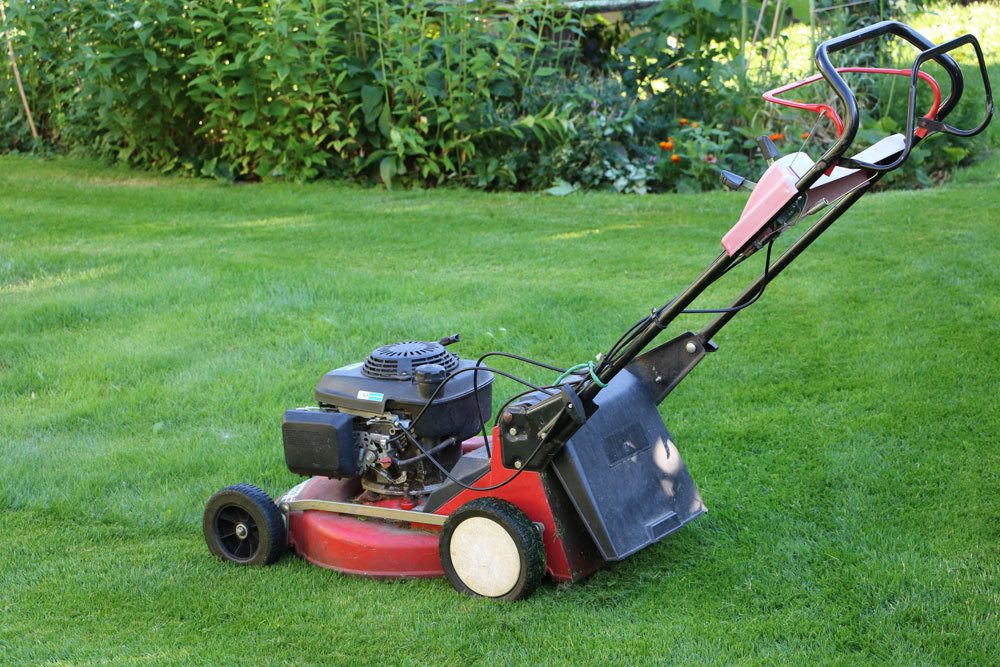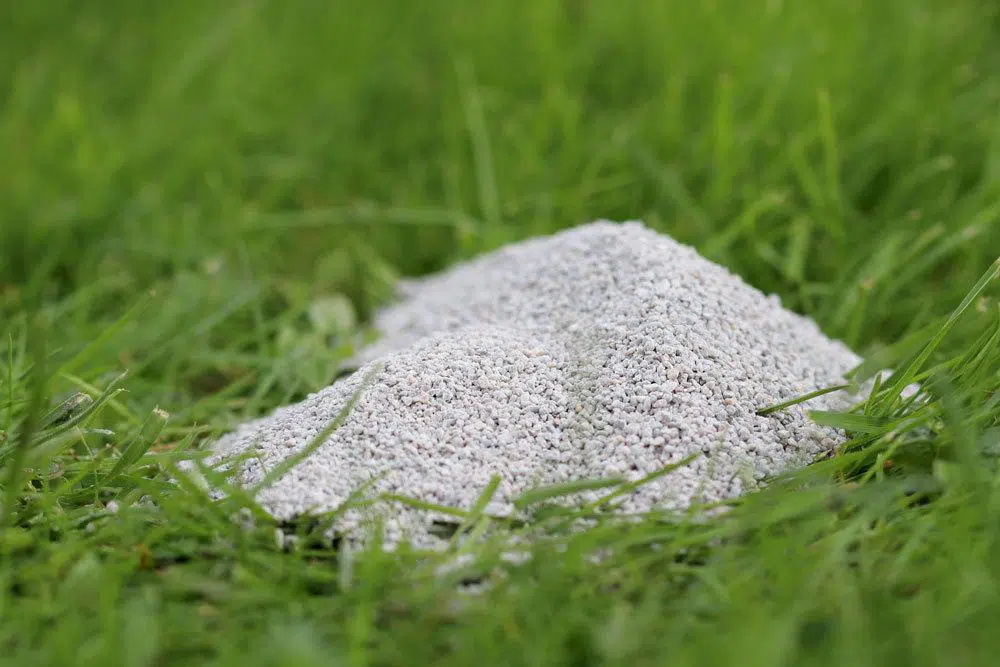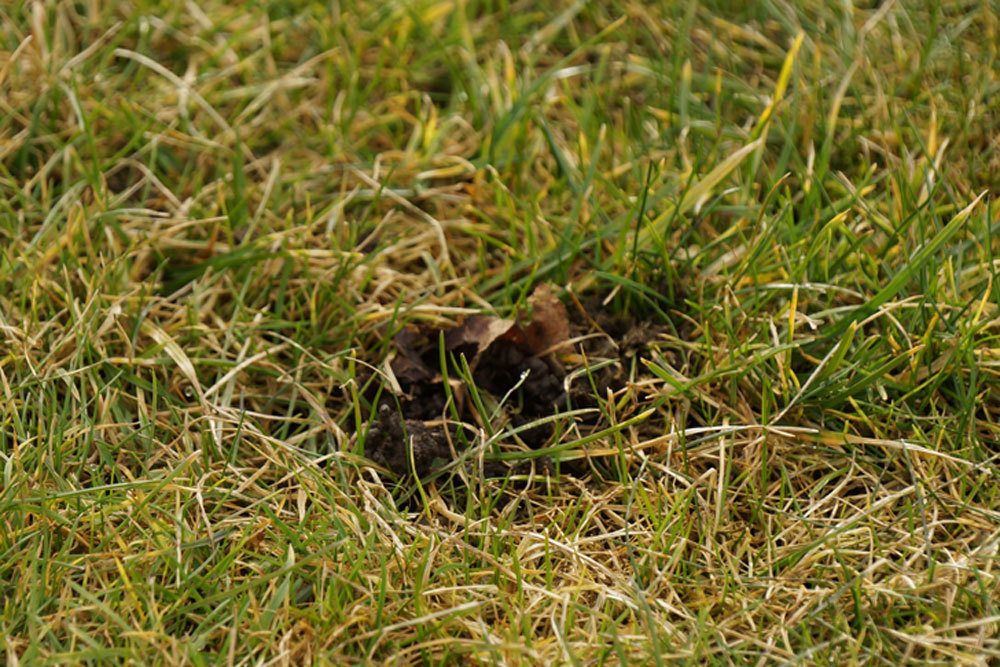Last updated on October 23rd, 2023 at 08:32 pm
Spring is coming and at the same time it’s gardening season. But when is actually the right time to care for the lawn?
Contents
Lawn
Maintained lawn, but how?
Most amateur gardeners know that dethatching, reseeding, and fertilizing are among the duties when a well-maintained lawn is desired. But when is what due or does it all need to be done at the same time? We’ll help you through the chaos with a step-by-step guide on how to get your lawn ready for summer in just a few easy steps.
Six steps to a well-maintained lawn:
- Expose the lawn and check its condition
- use the lawn mower for the first time
- scarify in warm weather
- Lime the lawn
- Fertilize the lawn
- reseed at the end
Inventory
The first step is to get an overview
the inventory and exposure of the lawn area
In autumn and winter, many leaves and branches fall from the trees. These must be removed before the lawn season begins. Old leaves in particular can become a problem, as moisture builds up on the lawn and it can no longer grow properly. For many amateur gardeners, existing molehills are also a nuisance. These can be easily removed and sealed. Keep in mind that moles are protected species and may not be killed.
Lawn mower
Time for the lawn mower
It is a perennial debate which is the right time to mow the lawn. Most amateur gardeners and even experts agree that April is the best month for this. However, the height of cut for the first mowing should not be less than four centimeters, otherwise the sensitive grass roots will be exposed and may freeze. Even in April, there may well still be cold nights.
If the nights are still very cold, it can be helpful to protect the lawn with a layer of mulch. In any case, growth does not begin until at least 15 degrees. This is also the reason why it makes no sense to scarify too early.

Scarifying
Dethatching – when is it time?
You should never scarify and mow the lawn at the same time, in April it is still much too cold for the scarifier. The optimal time is considered to be after the second mowing of the year. Using the scarifier is a bit of an art, because if you set the blades too low, the lawn can be damaged and irregular growth will result. The blades of the scarifier should not penetrate the soil more than three millimeters. This depth is sufficient to reliably remove felt and moss.
Important tips at a glance:
- do not use the scarifier until the growing season of the lawn has already begun
- the best time is after the second mowing
- do not set the blades deeper than three millimeters
- Quality instead of quantity – scarify a maximum of twice a year
Reaching for the scarifier is tempting, especially when the desired lawn again does not grow as hoped. Instead of lush, green grass, there are weeds and pesky grasses. However, the more often the scarifier is used, the greater the risk of damage to the lawn. Therefore, you should reach for the device no more than twice a year.
Apply lime
Even before you treat the lawn with fertilizer, you should regulate the pH of the lawn. To do this, lime the soil and then let it rest for a few days. Once the lime is completely dissolved, you can proceed to the next step.

Fertilizing the lawn
The right time for fertilizing has come after mowing, scarifying and liming. Since the lawn plants have had a winter, the additional nutrients are indispensable. There are special lawn fertilizers that are optimally tailored to the requirements of lawns. When fertilizing, make sure that the fertilizer is evenly distributed. This is important, otherwise you will provoke uneven growth.
There are special fertilizer spreaders for sale in specialized stores, with which you can fertilize evenly. If you need to spread fertilizer over a very large area, fertilizer spreaders can also be hitched to wheeled lawn tractors. To find the best day to fertilize, keep an eye on the weather. The best time is a day when there is overcast weather. It would be optimal if it rains heavily a short time later, as the fertilizer can then distribute well in the soil.
Mending bare patches in the lawn
Despite all the care measures, it can happen that you have to reseed the lawn. This is especially the case if the lawn is heavily mossy, a mole has been at work or shrubs have been removed. The best time to reseed is between May and June. Under no circumstances should you reseed in the dry summer months, because then the sensitive young plants can burn.

Important points that you should consider before sowing:
- buy the seed preferably from a specialized dealer
- when buying, take into account the environmental conditions of your lawn
- use fresh seeds, because the germination capacity of stored seeds decreases quickly
- use the same type of seed as used before, if possible
It is always a good idea to reseed bare spots with the same seed as before. If you only need to reseed a small area, you can work by hand. Alternatively, and for large areas, spreaders are a good choice for even distribution of lawn seed. Sprinkle sufficient and even lawn seeds on the bare areas and tread the seeds down. Now you need to water carefully, but do not use too much water.
If you reseed on a soil poor in humus, you should cover the seed with potting soil at the end to protect the seeds from drying out. Until germination occurs, you must keep the worked areas moist and do not walk on them.


